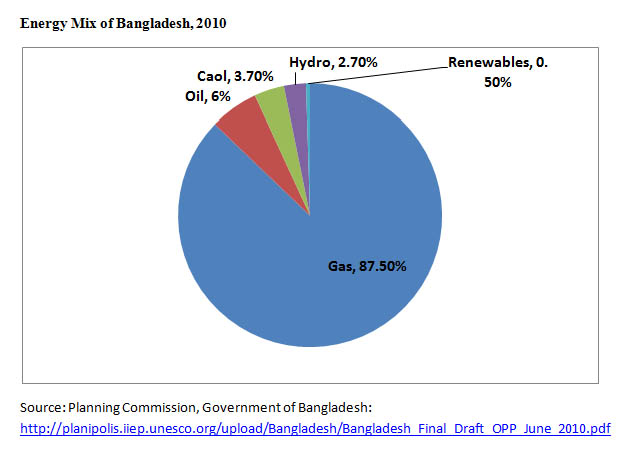Solar Energy

In Bangladesh 60% of the population do not have access to the power grid. The country only produces 3500-4200 MW of electricity against a daily demand for 4000-5200 MW on average, according to official estimates. Solar energy is an ideal solution as it can provide gridless power and is totally clean in terms of pollution and health hazards. Since it saves money on constructing electricity transmission lines, it’s economical as well.
Bangladesh receives an average daily solar radiation of 4– 6.5 kWh/m2. Since 1996, penetration of SHSs increased rapidly, mainly due to the efforts of Grameen Shakti, which sells PV systems on credit to rural households through its extensive network. In 2002, just 7,000 households in Bangladesh were using solar panels, but In June 2009, 320,000 consumers had new solar home systems, surpassing the original target of 50,000 by a factor of 600 percent.
Now more than one million households, or five million people, are benefitting from solar energy. A simple plug-and-play technology, the solar home system is well suited to a country with 300 sunny days on an average. Home systems can easily meet the small needs of two-thirds of the 100 million rural Bangladeshis with no access to electricity from the grid.
If the cost of electricity from renewable sources is quite high, but said that solar power is still popular in rural areas for lighting, especially when compared to the cost of kerosene for lamps.
Typically, people from the poorer sections opt for an SHS set that costs $124 and capable of generating about 10 watts of electricity to light a five watt CFL for about three hours. Better off people buy more powerful systems, paying 35 per cent of the total cost of the SHS in advance and the balance over a 12-month period. Costs vary with energy output, with the most expensive model costing $925 and providing 135 watts of uninterrupted power for four hours.

Grameen Shakti is the largest organization installing rural based solar home system (SHS) in Bangladesh. Other companies working on similar solar energy based SHS are Rural Services Foundation (RSF), Brac, Hilfulfujal and so on. The model of micro finance based SHS is now being copied in other parts of the world as a successful business model.
GS, a pioneer in promoting 'green energy', started out in 1996 as a lone player and today is the largest distributor of SHS - over 700,000 units out of a total of about 1 million in the country - contributing to the daily generation of about 60 Mw of solar power.
The government owned Infrastructure Development Company (IDCOL) estimates that each SHS saves at least $61.80 worth of kerosene every year and reduces carbon dioxide emissions by 375 kilograms annually as a result
The government has set a target of generating 500 megawatts (MW) of green energy – almost ten times the current amount – by 2015, in an attempt to narrow the gap between current supplies of grid electricity and the needs of the country’s 160 million people. Fossil fuels account for almost all the current capacity of 5,500 MW, with renewable sources – mostly solar power – contributing just 55 MW.
 Since November 2010, the government has mandated the installation of roof-top solar panels on all new high-rise buildings, and it currently has other solar power projects under development. Under the plan, 340 MW of new capacity will be generated from systems installed on residential, commercial and industrial buildings, as well irrigation pumps, mini-grid systems and solar parks. On the other hand the government also plans to implement a mega solar project by setting up a 500 MW solar panel-based power installation with financial support from the ADB. Such a project will require a huge investment of $2-3 billion according to power ministry officials.
Since November 2010, the government has mandated the installation of roof-top solar panels on all new high-rise buildings, and it currently has other solar power projects under development. Under the plan, 340 MW of new capacity will be generated from systems installed on residential, commercial and industrial buildings, as well irrigation pumps, mini-grid systems and solar parks. On the other hand the government also plans to implement a mega solar project by setting up a 500 MW solar panel-based power installation with financial support from the ADB. Such a project will require a huge investment of $2-3 billion according to power ministry officials.
Related Content
- South African Renewable Energy Masterplan (SAREM)
- Global Electricity Review 2025
- Decentralised renewable energy for agriculture in Malawi
- Order of the National Green Tribunal regarding felling of trees by solar power companies, village Kunidhar, Almora, Uttarakhand, 13/02/2025
- Africa Solar Outlook 2025
- Global electricity review 2024
